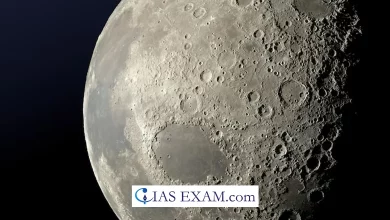Daily Current Affairs for UPSC
Suborbital Tech Demonstrator (SorTeD)
Syllabus- Science and Technology [GS Paper-3]

Context- Space technology startup Agnikul Cosmos recently announced that it has developed a rocket for a planned suborbital space flight.
Key Highlights
- The successful flight makes Agnikul the second Indian aerospace company after Hyderabad-based Skyroot Aerospace to launch a vehicle into space.
- The November 2022 launch of Skyroot’s 545 kg Vikram-S rocket marked the launch of India’s private space industry.
What is the space vehicle of Agnikul?
- It is a Suborbital Tech Demonstrator (SorTeD) single-stage launch vehicle called Agnibaan, powered by the company’s proprietary Agnilet engine.
- Agnibaan SorTeD takes off vertically and follows a predetermined trajectory.
- It can carry a payload of up to 100 kg into low Earth orbit (LEO) to a distance of up to 700 km.
What sort of engine does Agnikul have?
- The Agnilet engine is a fully 3D-printed, one-piece, 6 kN semi-cryogenic engine.
- In 2021, Skyroot successfully launched the country’s first privately developed cryogenic engine, the Dhawan-1, which was also fully 3D printed using superalloy in a process that reduced production time by 95 percent.
- The Agnilet engine uses room temperature liquid kerosene and supercooled liquid oxygen as propellants.
Current Status of Indian Space Sector
- India’s space industry accounted for just under 3% of the fast-growing global space economy, which was already worth at least $360 billion.
- Indian industry cannot compete globally because its role has traditionally been to supply components and sub-systems.
- Indian industry did not have the resources or technology to undertake the kind of independent space projects that companies like SpaceX did in the US.
- Even in India, ISRO could not keep pace with the growing demand for space-based applications and services.
- Therefore, in June 2020, the government approved the establishment of the Indian National Center for Space Promotion and Licensing (IN-SPACe) to ensure greater participation of the private sector in Indian space activities and revitalize the sector.
What are the benefits of privatization of ISRO?
- The private participation will free up ISRO to focus on science, R&D, interplanetary exploration and strategic launches.
- Too many of ISRO’s resources are currently consumed by routine activities that delay its more strategic goals.
- Commercial Advantages: It does not make sense for ISRO to launch weather or communication satellites alone.
- More and more private entrepreneurs are taking over this activity for commercial interests.
- ISRO Revenue: ISRO can earn money by providing facilities and data to private players.
- It is not that private players have siphoned off the revenue that ISRO receives from commercial launches.
- “Explosive growth” of the space economy is expected in the coming years, and there would be enough for everyone.





.png)



